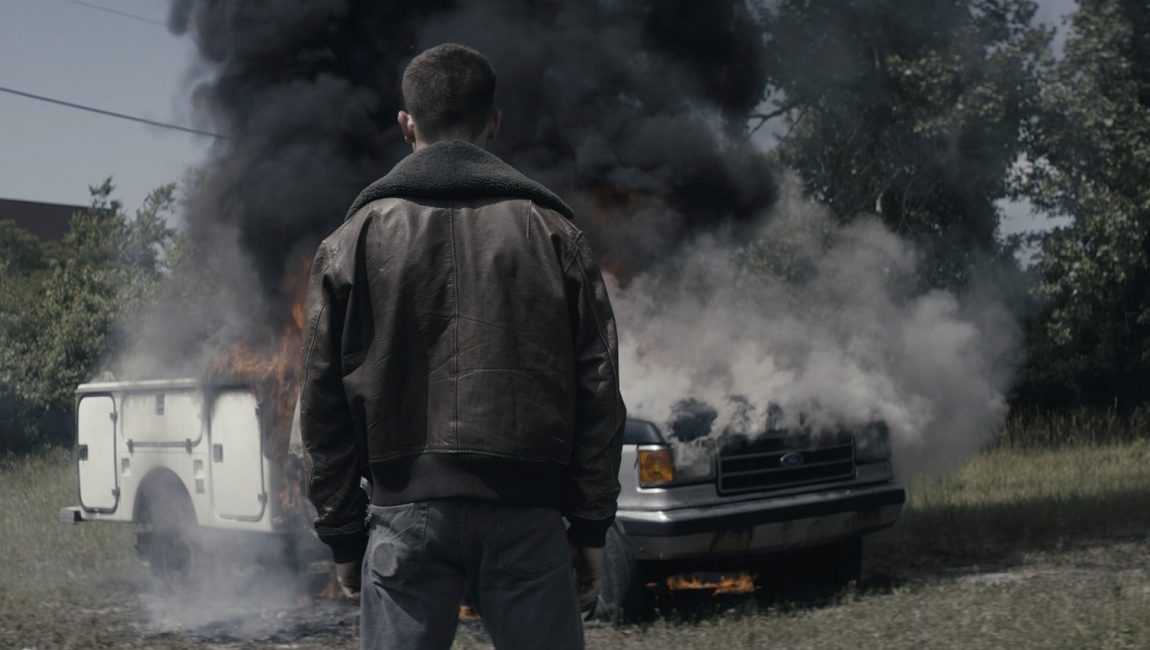“Gang gang.” “Ice cream so good.” You can listen to these words while buttering toast (the voice belongs to Pinkydoll). You can gamble online while bending to brush a fleck of faded paint from a balustrade. Neon lights illuminate walls that were laid centuries ago. To be modern is to collapse these figurations of hyper-futurity into an old world that still surrounds them; stirring sugar into coffee. When dissolved, we can taste them. The Cord of Life, Qiao Sixue’s debut, makes an often compelling, albeit uneven, attempt to surface these contradictions. But it’s not the only framework that the film places upon itself. Alus (Yider) is an electronic musician. His mother (Badma) suffers from Alzheimer’s. Yearning for her homeland in the grasslands of the steppe, Alus assumes the responsibility of returning with her.
There’s a social dimension to the ravages of memory loss, a forgetting that is both public and private. The language we use is telling; how someone “holds” memories, as if we are all an archive, or perhaps its custodian. Qiao attempts to interweave the public and private experience of memory loss through the relationship between mother and son, but as much as their tragedy is their own, the aperture is widened, gesturing toward a broader social fabric. Signifiers of differentiation — old world and new — come thick and fast: a horse that canters down a city highway; laptop and iPhone versus morin khuur and accordion; sleek city trainers and sturdy woolen boots; the chalk pictures that the mother draws, of trees and hillsides, on her bedroom wall. Material culture and intangible cultural heritage both play a role in structuring Alus and his mother’s reintegration with the grasslands, but it’s here that the symbolism feels overburdened by the more ambivalent emotional relationships that are held between mother and son, past and present, tradition and modernity.
In The Cord of Life’s final third, Alus, his mother, and his new love interest embark on a journey into the heartland of the steppe, searching for a “half dead, half living” tree — one that appears in a photograph hung on the family home’s wall. It’s here that Qiao introduces a motif that folds in gleaming wind farms, electricity pylons, buzzing drones — modern infrastructure and technologies that inhibit and distort the “natural” world of the grasslands and its communities (the drone is used to deter Alus from crossing a shepherd’s land, while fences block the way). Unlike other dissonances Qiao introduces, these elements work quite organically, never seeming too heavy-handed, and instead existing simply as part of the “landscape.”
In recent years, an increasing number of films alight on the vagaries of neurodegeneration; works like Gaspar Noe’s Vortex and Mia Hansen-Love’s One Fine Morning. Detailed therein is the slow snapping of a thread that holds between parents and their children, inverting the relationship of care. The Cord of Life, too, enters into this moment, and does so in a way that is often very human, and humane, though it rarely peers too closely toward the dissociative. We see almost entirely through the eyes of Alus, unlike Noe’s cleaved-in-two screen — the fragmentation that this wrought.
There are moments of sublimity here, one of which is reminiscent of Tsai Ming-Liang’s Goodbye, Dragon Inn (2003); a mother and son sit in an abandoned auditorium, staring into the emptied void of the stage. Later, there are moments of mild estrangement, and we “see” the world — glimpsing — through the mother’s eyes. But these moments feel too infrequent. Instead, for the most part, The Cord of Life does all the things contemporary arthouse films are supposed to do. There is lightweight camerawork; shot counter-shot. We are always very close, in mediums. The differentiation is extended — cleverly — with the use of light and shadow. The city apartment is murky, lights running to cold blues and queasy greens, while in the steppe, a softness and brightness returns. It’s unclear if Qiao is suggesting that a bucolic “return” — into/toward nature — might compensate for the iniquities of suffering; that urbanism itself might agitate against the idea of wellness.
In The Cord of Life, Qiao attempts to balance two narrative structures (and sometimes more) that jostle together. There is Alus and his journey in life; there’s his mother’s illness; there’s a love interest; there’s the relationship between past and present, and the tension between urban and rural. But in execution, these elements often part ways when it feels like they should be holding hands. Elsewhere, their presentation can seem cloudy and ill-thought-through; this is specifically true of Alus’ music, a detail that seems broadly irrelevant for much of the film, except to provide a knowing inflection of variance that holds between metropolitan and steppe life. At one point, as Alus is showing off his electronic music to his new love interest, his mother arrives with his old morin khuur; he handles it, for a moment, before returning it roughly to its box. It’s a moment that feels a little too studied, too self-aware in its symbolism. Rather, The Cord of Life is at its best when mother and son sit in the cinema, quietly, an invisible bond drawing between them.
Published as part of New York Asian Film Festival 2023.







